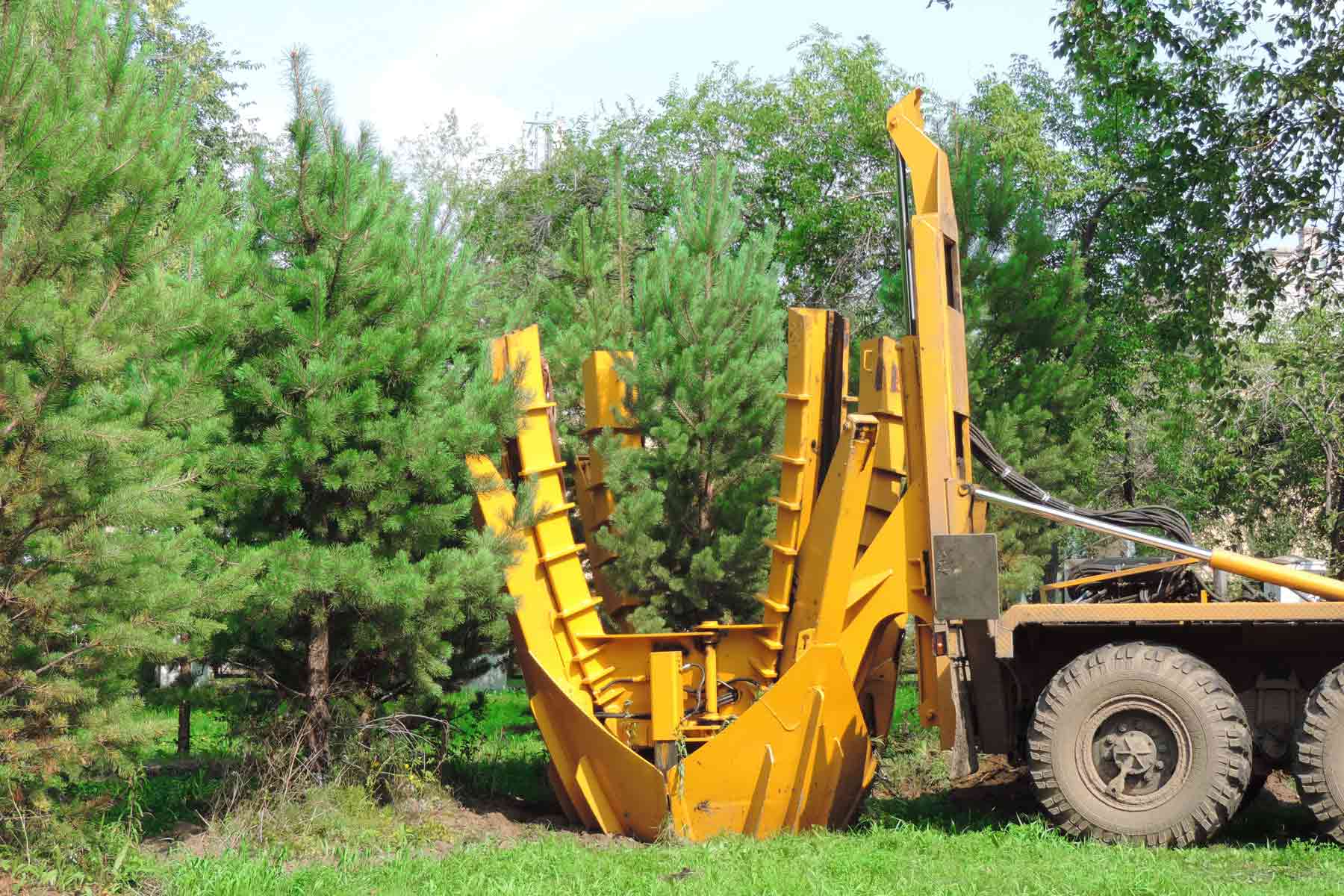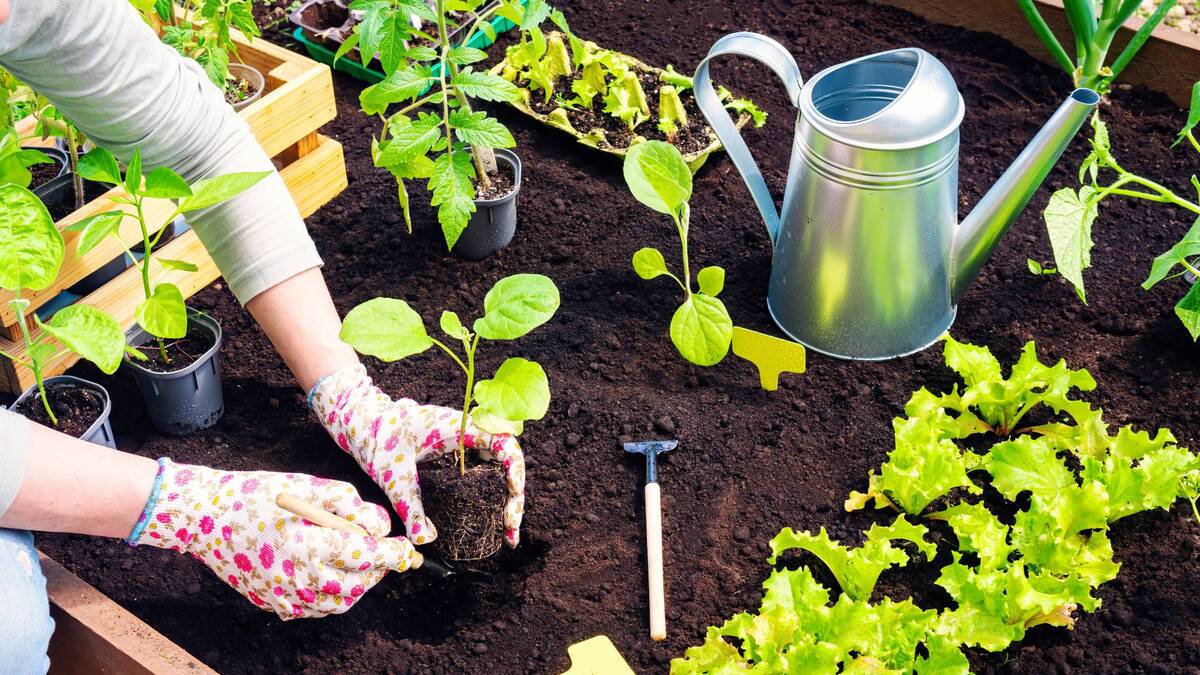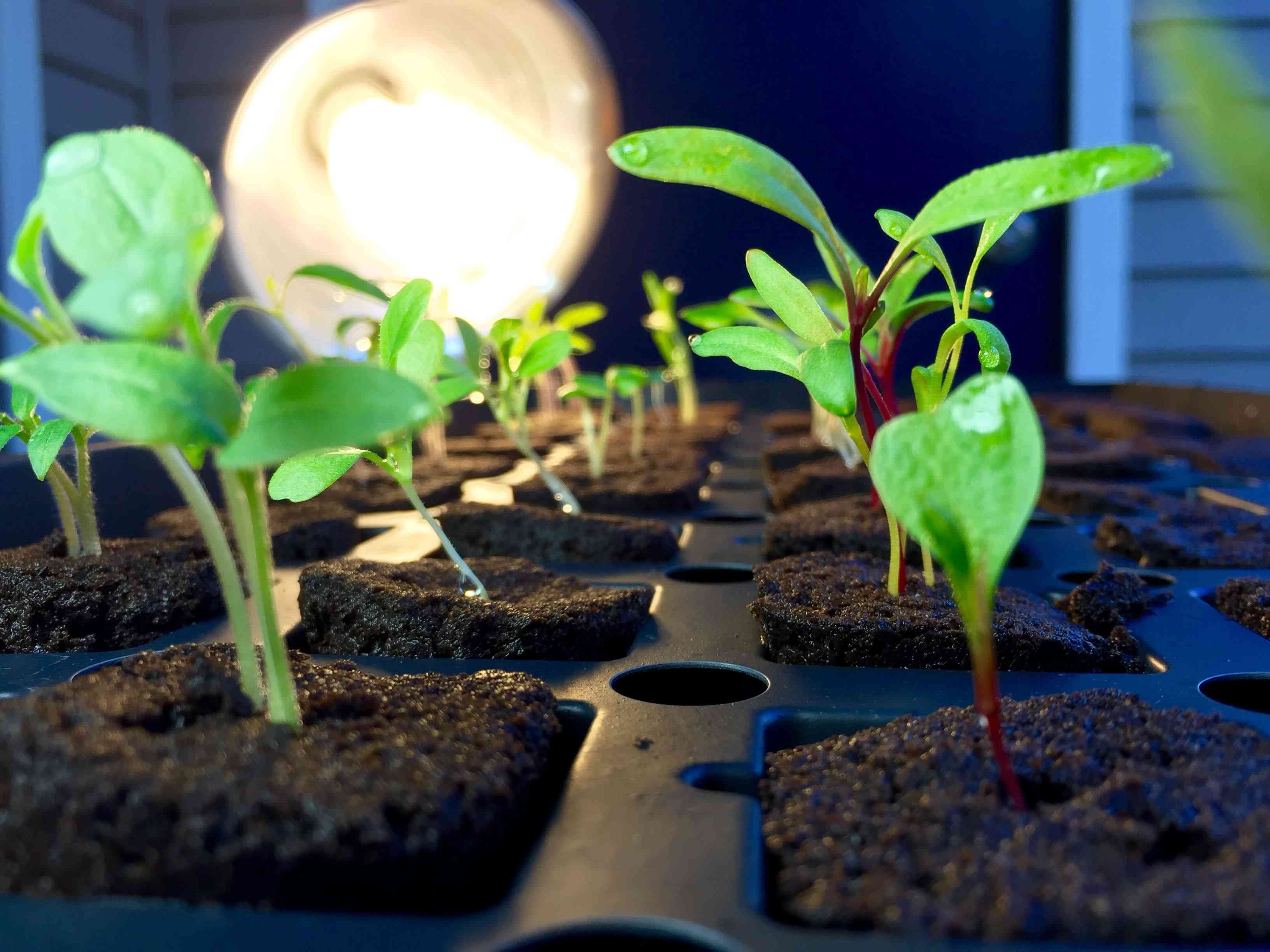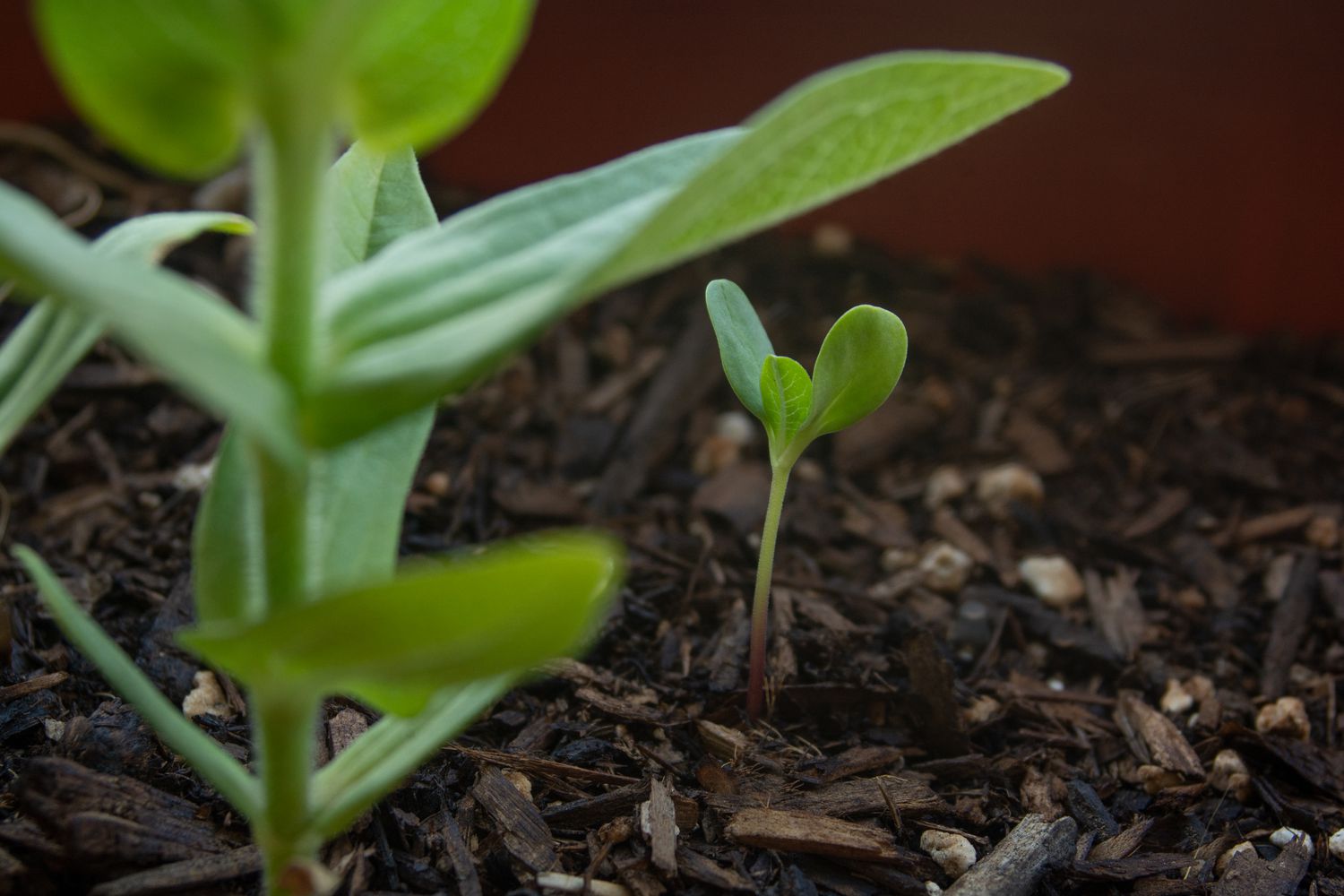Home>Types of Gardening>Ornamental Gardening>When To Transplant Lily Bulbs


Ornamental Gardening
When To Transplant Lily Bulbs
Published: January 24, 2024
Learn when to transplant lily bulbs for a thriving ornamental garden. Expert tips on timing and techniques to ensure successful transplantation.
(Many of the links in this article redirect to a specific reviewed product. Your purchase of these products through affiliate links helps to generate commission for Chicagolandgardening.com, at no extra cost. Learn more)
Table of Contents
Introduction
Lilies are one of the most popular and beautiful flowering plants in ornamental gardens. Their vibrant colors, delicate petals, and remarkable fragrance make them a favorite among gardeners of all levels. Whether you have recently moved to a new home or are looking to redesign your garden, transplanting lily bulbs can be a great way to refresh your landscape and add a touch of elegance.
Transplanting lily bulbs involves moving the bulbs from their current location to a new spot in your garden. This process requires careful planning and execution to ensure the health and longevity of the bulbs. By understanding when and how to transplant your lily bulbs, you can optimize their growth and enhance the overall aesthetic of your garden.
In this article, we will guide you through the factors to consider before transplanting, the best time to undertake this task, the steps involved in the process, as well as essential aftercare tips. Additionally, we will highlight some common mistakes to avoid when transplanting lily bulbs to help you achieve the best possible results.
So, if you’re ready to learn about the art of transplanting lily bulbs and elevate your gardening skills, let’s dive in and explore this captivating process together.
Factors to Consider Before Transplanting Lily Bulbs
Before you embark on the task of transplanting your lily bulbs, there are a few important factors to consider. These considerations will help ensure the success and viability of your transplanted bulbs.
- Growth Stage: It is crucial to evaluate the growth stage of your lilies before transplanting. Ideally, you want to transplant them while they are dormant or just beginning to show signs of growth. This typically occurs in early spring or late fall, depending on your region.
- Soil Conditions: Lily bulbs thrive in well-draining soil that is rich in organic matter. Before transplantation, assess the soil condition in both the current and new planting locations. If the soil is heavy or compacted, consider amending it with organic compost to improve drainage and nutrient content.
- Sunlight Requirements: Lilies generally prefer full sun or partial shade locations. Take note of the sunlight exposure in both the current and new areas of your garden. This will help ensure that the transplanted bulbs receive the right amount of sunlight for optimal growth.
- Spatial Requirements: Consider the spacing requirements of your lilies. These plants need sufficient room to spread their roots and grow to their full potential. Ensure that the new planting location can accommodate the size and height of your lilies without crowding or overshadowing other plants.
- Temperature and Climate: Lily bulbs have specific temperature and climate preferences. Some lily varieties are more tolerant of cold temperatures, while others thrive in warmer climates. Research the recommended temperature range and climatic conditions for your specific lily variety to choose an appropriate transplanting time.
- Pest and Disease Control: Before transplanting, inspect the current location for any signs of pests, diseases, or pathogens that may affect the health of your lilies. It is essential to mitigate any existing issues before moving the bulbs to prevent further spread or damage.
By considering these factors, you can ensure that you are providing the best possible conditions for your lily bulbs during the transplanting process. This will help promote their growth, health, and overall vitality in their new home.
Best Time to Transplant Lily Bulbs
Timing is crucial when it comes to transplanting lily bulbs. Choosing the right time ensures that the bulbs have the best chances of survival and successful establishment in their new location.
The general rule of thumb is to transplant lily bulbs during their dormant period, which typically falls in early spring or late fall, depending on your specific region and climate. Transplanting during dormancy allows the bulbs to adjust and recover without the added stress of actively growing. It also minimizes the risk of damage to the delicate foliage and roots.
For most gardeners, early spring is the preferred time to transplant lily bulbs. As the winter frost begins to subside and the soil temperature warms up, lilies naturally start emerging from their dormancy. This period offers a good window of opportunity to carefully lift and move the bulbs to their new location. It also allows the transplanted lilies to take advantage of the upcoming growing season to establish their roots and prepare for the summer bloom.
In regions with mild climates and longer growing seasons, late fall can also be an appropriate time to transplant lily bulbs. The soil is still relatively warm, and the cool temperatures provide a favorable environment for root development.
However, it’s important to note that the exact timing for transplanting lily bulbs may vary depending on the specific variety and local climate conditions. Some lily cultivars may have different dormancy periods or unique growing requirements. Therefore, it’s always best to consult local gardening resources or seek advice from experienced gardeners in your area to determine the most suitable transplanting time for your lilies.
By carefully selecting the optimal time to transplant your lily bulbs, you can give them the best chance to thrive and grace your garden with their magnificent blooms. Remember to consider your specific climate and the needs of the lily variety you are working with to ensure successful transplantation.
Steps for Transplanting Lily Bulbs
Transplanting lily bulbs requires proper preparation and execution to ensure the health and successful establishment of the bulbs in their new location. Follow these steps to transplant your lily bulbs with care:
- Prepare the New Planting Spot: Choose a well-drained area in your garden that receives adequate sunlight for your lilies. Prepare the soil by removing any weeds or debris and dig a hole deep enough to accommodate the bulb, leaving sufficient space for growth.
- Prepare the Lily Bulbs: Carefully dig up the lily bulbs from their current location, taking care not to damage the roots or shoots. Gently remove any loose soil clinging to the bulbs and inspect them for signs of pests or disease. If necessary, treat the bulbs before transplanting.
- Plant the Lily Bulbs: Place the bulbs in the prepared hole, ensuring that the pointed end faces upward. The depth at which you plant the bulbs will depend on their specific variety, so refer to the packaging or consult gardening resources for guidance. Backfill the hole with soil, gently firming it around the bulbs to eliminate air pockets.
- Water the Newly Transplanted Bulbs: After planting, thoroughly water the area to settle the soil and provide moisture to the roots. Be careful not to overwater, as excessive moisture can lead to root rot. Monitor the moisture level over the next few weeks and water when the top inch of soil feels dry.
- Apply Mulch: Mulching around the newly transplanted lily bulbs helps conserve moisture, suppress weeds, and regulate soil temperature. Use a layer of organic mulch, such as wood chips or straw, and apply it around the base of the plants, taking care to keep it a few inches away from the stems to prevent rotting.
- Monitor and Maintain: Keep a close eye on the transplanted lily bulbs in the first few weeks. Watch for any signs of stress, such as wilting or yellowing leaves, and take appropriate action if needed. Regularly water and fertilize as required, following the recommendations specific to the lily variety you are growing.
By following these steps, you can ensure the successful transplantation of your lily bulbs and provide them with the best conditions to thrive in their new location. Remember to handle the bulbs with care, pay attention to their specific requirements, and provide proper maintenance as they establish themselves.
Aftercare for Transplanted Lily Bulbs
After transplanting your lily bulbs, it is essential to provide proper aftercare to ensure their healthy growth and long-term success in their new environment. Follow these aftercare tips to help your transplanted lilies thrive:
- Watering: Consistent and adequate watering is crucial during the initial stages after transplanting. Keep the soil evenly moist but not waterlogged. Provide water whenever the top inch of soil feels dry, especially during periods of dry weather or extended periods without rainfall.
- Fertilization: Feed your transplanted lily bulbs with a balanced fertilizer to provide them with essential nutrients. Apply a slow-release granular fertilizer according to the package instructions or use a liquid fertilizer diluted in water. Fertilize in early spring and again once the lilies start actively growing.
- Mulching: Continue to mulch around the transplanted bulbs to retain soil moisture and suppress weed growth. Renew the mulch layer as needed to maintain a thickness of 2-3 inches. Ensure that the mulch stays away from the stems to prevent rotting.
- Staking: As your lilies grow taller, some varieties may require staking to provide support and prevent them from bending or toppling over. Install stakes or use a plant support system early in the growing season to avoid damaging the fragile stems later on.
- Deadheading: Regularly remove faded or spent flowers, known as deadheading, to promote continued blooming and prevent the plant from wasting energy on seed production. Snip off the dead flowers just above a set of healthy leaves or buds.
- Pest and Disease Control: Monitor your transplanted lilies for any signs of pests or diseases. Aphids, slugs, snails, and lily beetles are common pests that may attack lilies. Use organic pest control methods or consult a gardening professional to address any issues promptly and prevent them from spreading.
- Winter Protection: In areas with harsh winters, provide protection to your transplanted lilies to ensure their survival until spring. Apply a layer of mulch around the base of the plants to insulate the soil and protect the bulbs from freezing. You can also cover the plants with burlap or straw during extreme cold spells.
By following these aftercare practices, you can nurture your transplanted lilies and help them establish well in their new location. With proper attention and care, they will reward you with their beautiful blooms year after year.
Common Mistakes to Avoid When Transplanting Lily Bulbs
While transplanting lily bulbs can be a rewarding experience, there are several common mistakes that gardeners should avoid to ensure the best results. By being aware of these pitfalls, you can avoid unnecessary setbacks and promote the successful establishment of your transplanted lily bulbs. Here are some common mistakes to steer clear of:
- Transplanting at the Wrong Time: Timing is crucial when transplanting lily bulbs. Avoid transplanting them while they are actively growing or during hot summer months, as this can cause excessive stress and damage to the plants.
- Not Preparing the Soil: Failure to prepare the planting spot properly can lead to poor drainage, nutrient deficiencies, and stunted growth. Take the time to amend the soil with organic matter, remove weeds and debris, and create an optimal environment for the transplanted bulbs.
- Damaging the Bulbs: Lily bulbs are delicate and prone to damage. Take care when digging them up and handling them to minimize any harm to the roots or shoots. Avoid cutting or breaking the bulbs, as this can compromise their viability.
- Planting at the Wrong Depth: Planting lily bulbs too shallow or too deep can hinder their growth. Follow the specific planting depth guidelines for your lily variety to ensure proper development of roots and shoots.
- Overwatering or Underwatering: Finding the right balance in watering is essential for the health of transplanted lily bulbs. Avoid overwatering, which can lead to root rot, or underwatering, which can cause the plants to become dehydrated and fail to thrive.
- Not Providing Adequate Sunlight: Lilies require sufficient sunlight to bloom and grow. Ensure that the new planting spot offers the right amount of sunshine for your specific lily variety. Insufficient light can result in weak and floppy plants.
- Neglecting Pest and Disease Control: Ignoring signs of pests or diseases can lead to serious damage to your transplanted lilies. Regularly inspect the plants for any signs of infestation or infection and take appropriate measures to control and prevent further damage.
- Failing to Properly Maintain the Transplanted Bulbs: Aftercare is essential for the long-term success of your transplanted lily bulbs. Neglecting regular watering, fertilization, and other necessary maintenance practices can hinder their growth and overall health.
By avoiding these common mistakes, you can maximize the chances of a successful transplant and enjoy the beauty of healthy, thriving lilies in your garden. Remember to be patient and diligent with their care, as it can take some time for the transplanted bulbs to establish and fully bloom.
Conclusion
Transplanting lily bulbs can be a rewarding and transformative experience for any ornamental gardener. By considering the factors involved, choosing the best time, following the proper steps, and providing the necessary aftercare, you can ensure the successful establishment and blooming of your transplanted lilies.
Before transplanting, evaluate the growth stage, soil conditions, sunlight requirements, spatial needs, and climate preferences of your lilies. These factors will help you select the ideal time to initiate the transplantation process.
Follow the steps for transplanting, which include preparing the new planting spot, handling and planting the bulbs correctly, watering adequately, applying mulch, and providing ongoing care such as fertilization and pest control.
Avoid common mistakes such as transplanting at the wrong time, failing to prepare the soil properly, damaging the bulbs, planting at the wrong depth, overwatering or underwatering, neglecting pest and disease control, and not properly maintaining the transplanted bulbs.
By avoiding these pitfalls and consistently providing the necessary care, you can enjoy the beauty and fragrance of your flourishing lilies as they bloom and enhance your ornamental garden.
So gather your gardening tools and embark on the journey of transplanting your lily bulbs. Create a vibrant landscape, filled with the elegance and charm of these stunning flowering plants. With patience, knowledge, and attention to detail, you will be rewarded with a breathtaking display of color and fragrance that will captivate both you and your visitors for years to come.






